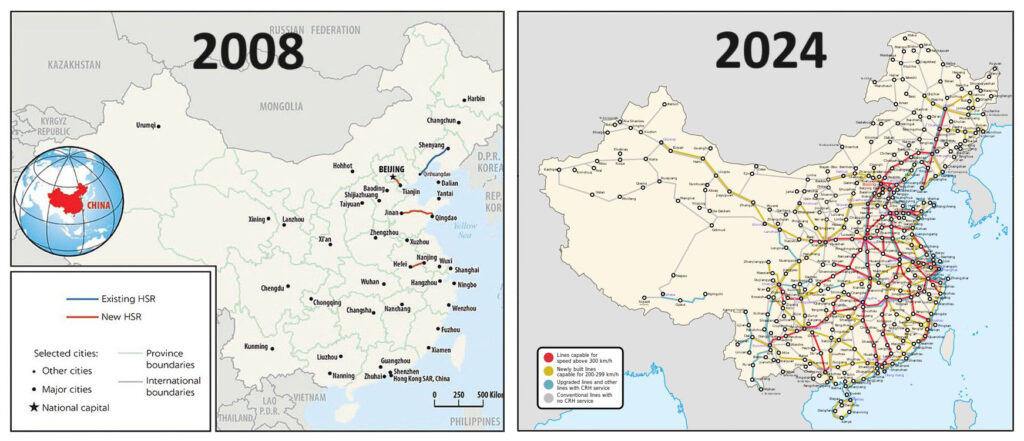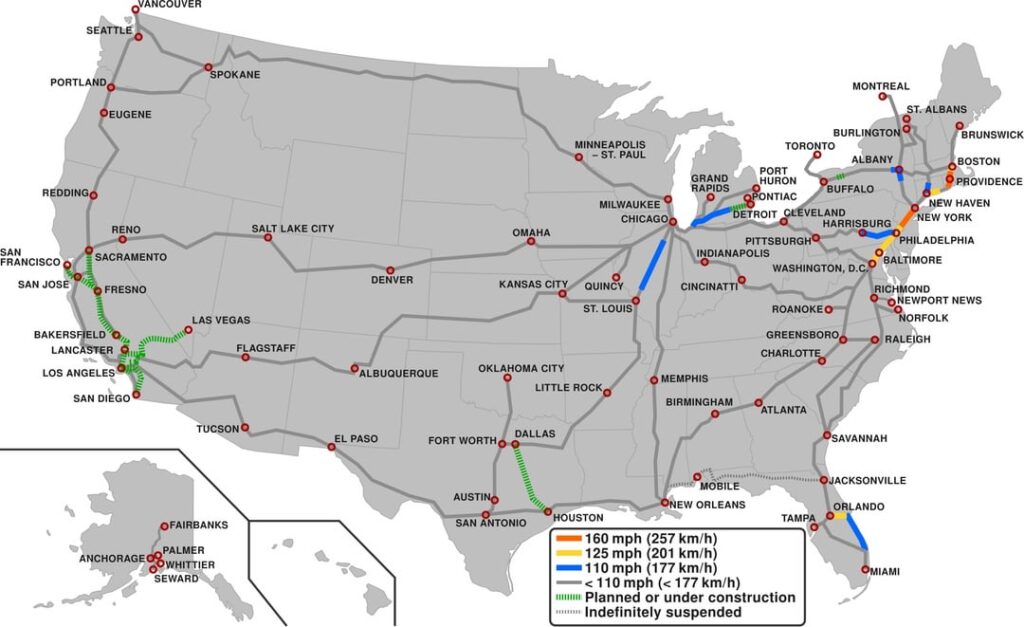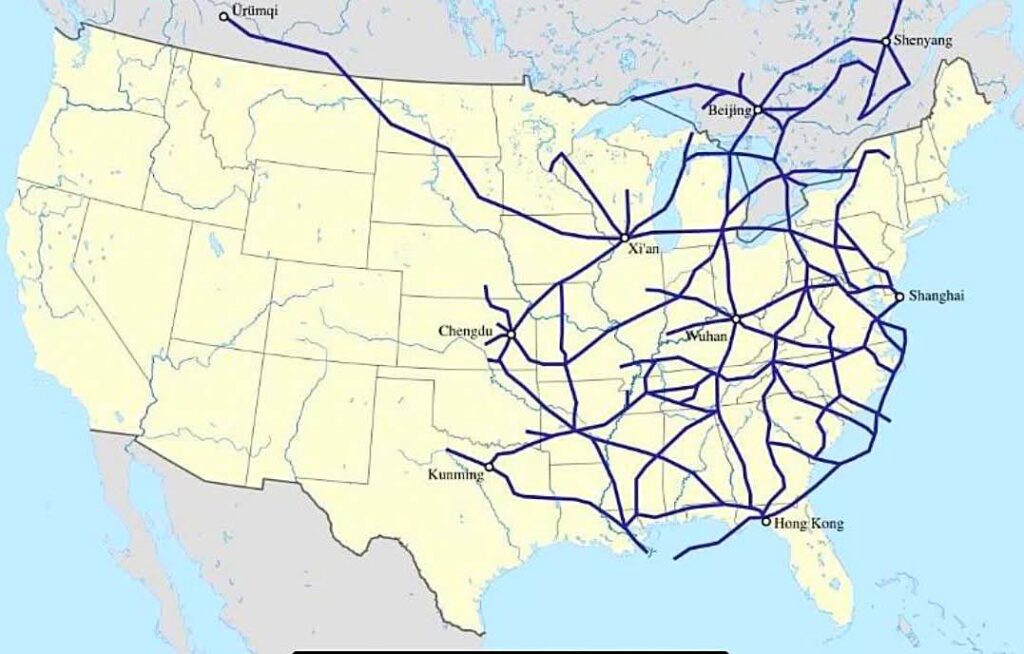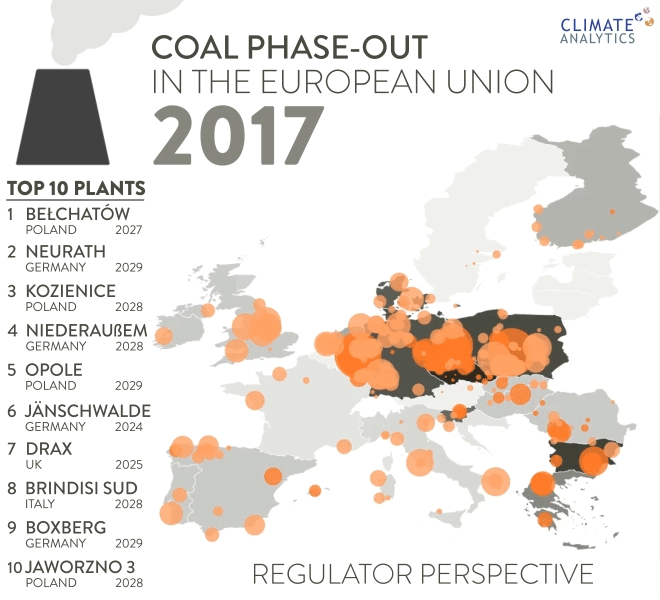From Coal Trains to Bullet Trains: How China Outbuilt the U.S. in High-Speed Rail
In just over a decade, China has managed to do what few thought possible—build the world’s largest high-speed rail network from almost nothing. Back in 2008, China’s high-speed rail barely existed. Today, it spans over 47,000 kilometers (about 29,204 miles), crisscrossing the country with speeds that rival short-haul flights.

Looking at that map, you can see China’s HSR lines move from isolated corridors into a dense mesh, especially across eastern provinces. Over these years, high-speed rail became a daily reality for millions.
China’s total railway network now covers around 162,000 km (100,662 miles), including freight and conventional lines.
By contrast, the U.S. has had only modest progress. Its eventful rail history started long ago, but modern high-speed rail remains limited mostly to the Northeast Corridor, where Amtrak’s Acela Express runs at up to 125-160 mph (201-257 km/h).

You can see high-speed-capable tracks clustered in that corridor. Elsewhere, most routes operate at much lower speeds, often sharing track with freight.

This overlay map gives a sense of scale. China’s network, if transposed onto North America, would cover the eastern U.S. in a dense mesh and push well into Canada. The westernmost line – stretching toward Ürümqi in real life – reaches just shy of the Pacific coast of British Columbia.
To make all this easier to digest, here’s a comparison table:
| Feature | China (2024) | United States (2024) |
|---|---|---|
| HSR length | ~47,000 km (29,200 mi) | ~735 km (457 mi) |
| Start of modern HSR | 2008 (Beijing–Tianjin line) | 2000 (Acela Express) |
| Max train speed | 350 km/h (217 mph) on major lines | 257 km/h (160 mph) over limited Acela segments |
| Passenger trips (2024) | ~4.3 billion total rail trips | ~3.5 million on Acela; Northeast Regional ~10 million total |
| Freight volume (2024) | ~5.2 billion tonnes | ~1.7 billion tonnes |
Looking at the maps and table together makes it clear: China’s expansion was aggressive, systemic, and broad in scale. The U.S., in comparison, has taken a much slower path, with improvements limited to a few corridors and focused mainly on upgrading existing routes rather than building new networks.









There is no desire for bullet trains in America. We are car people in America. Our sense of independence is to great to want to rely on public transportation. Typical Town-to-Town Distance in the United States is 30–60 miles (rural); 5–15 miles (urbanized states) America population densely is really low compared to the rest of the world even within metro areas, destinations are spread out.
I see what you mean. Cars and independence are a big part of how a lot of people here think about getting around. Plus, towns are spread out a lot, so public transit doesn’t always work like it does in other places.
At the same time, some areas are starting to try things like bullet trains to connect bigger cities. That might be a quicker and greener way to travel longer distances. And it feels like some of the younger crowd in cities are more into public transit or don’t mind skipping having a car, probably because dealing with traffic and parking is such a pain.